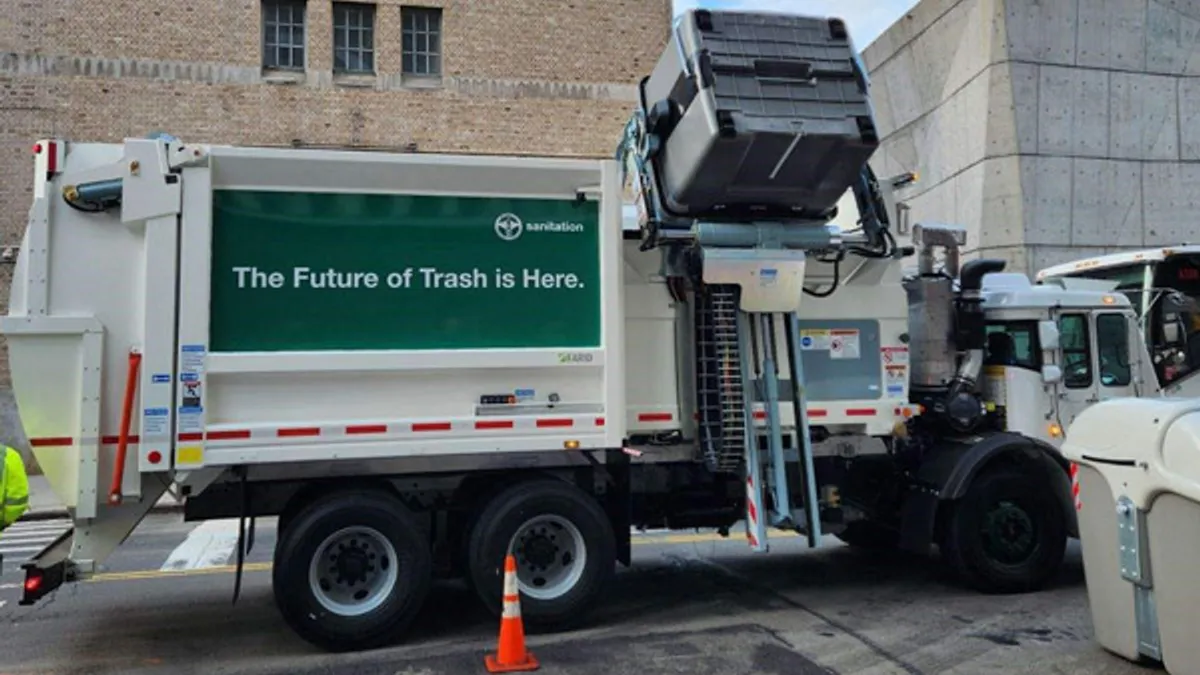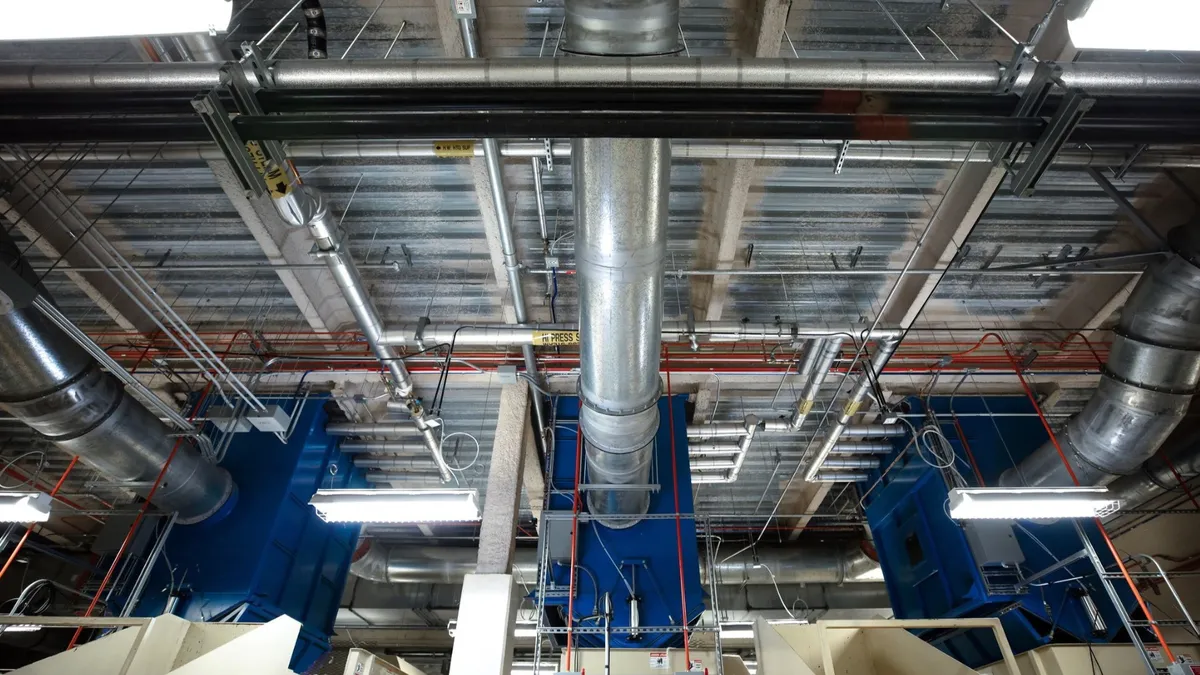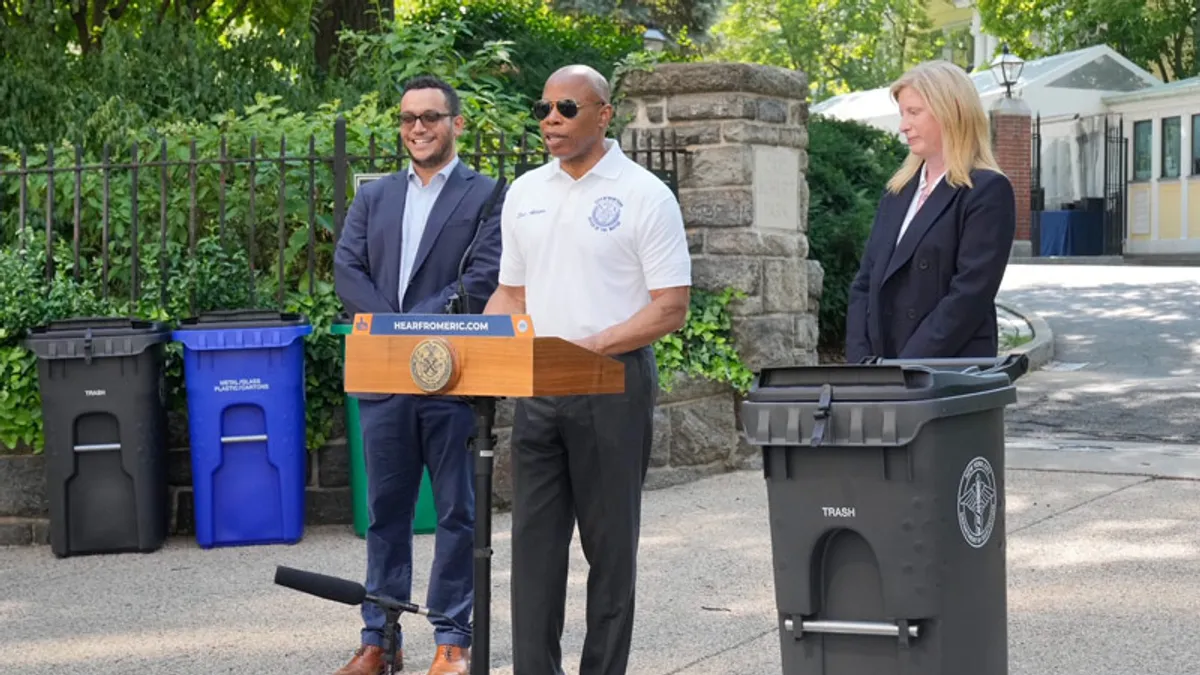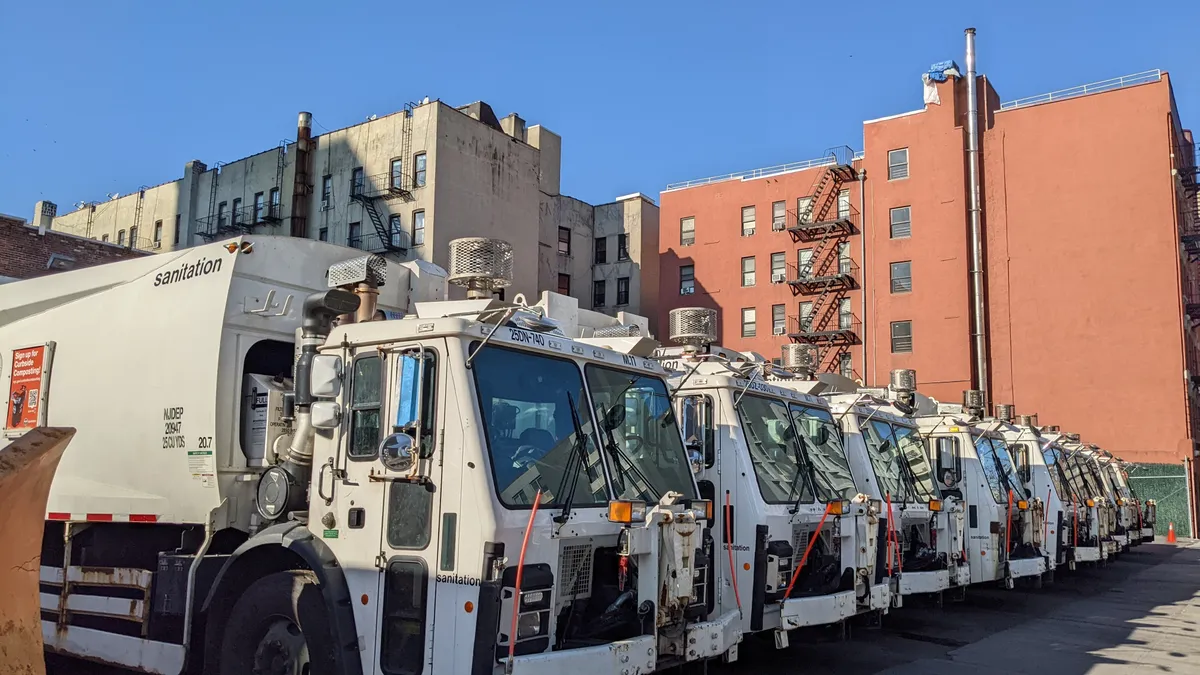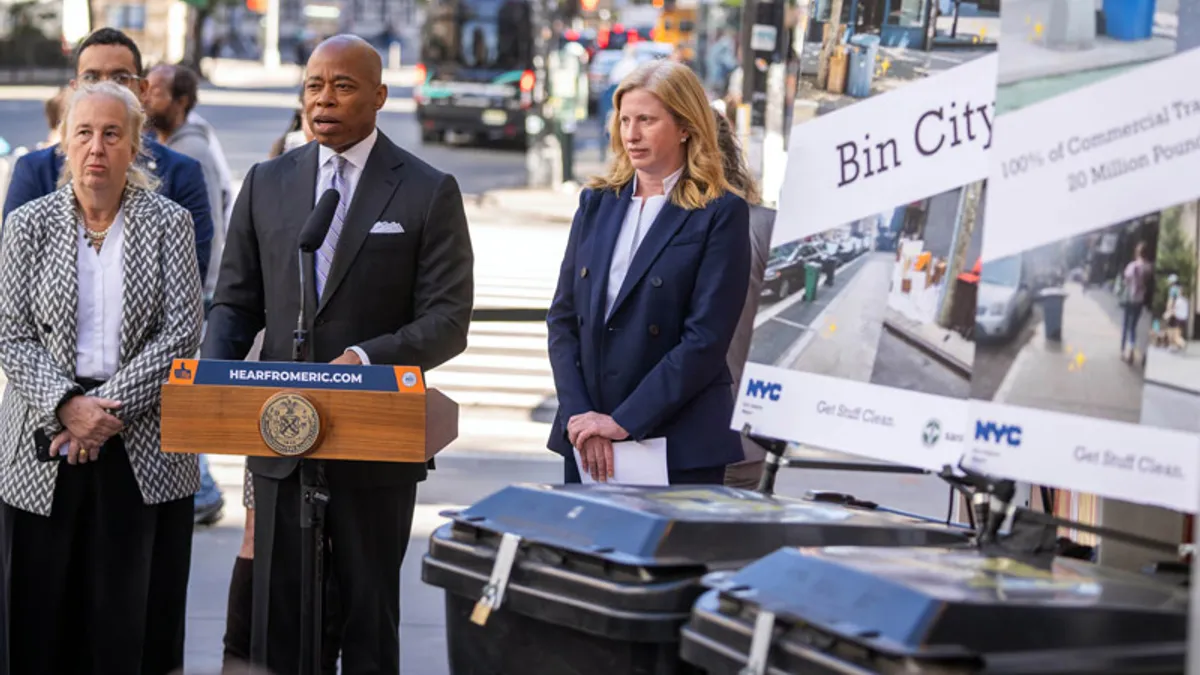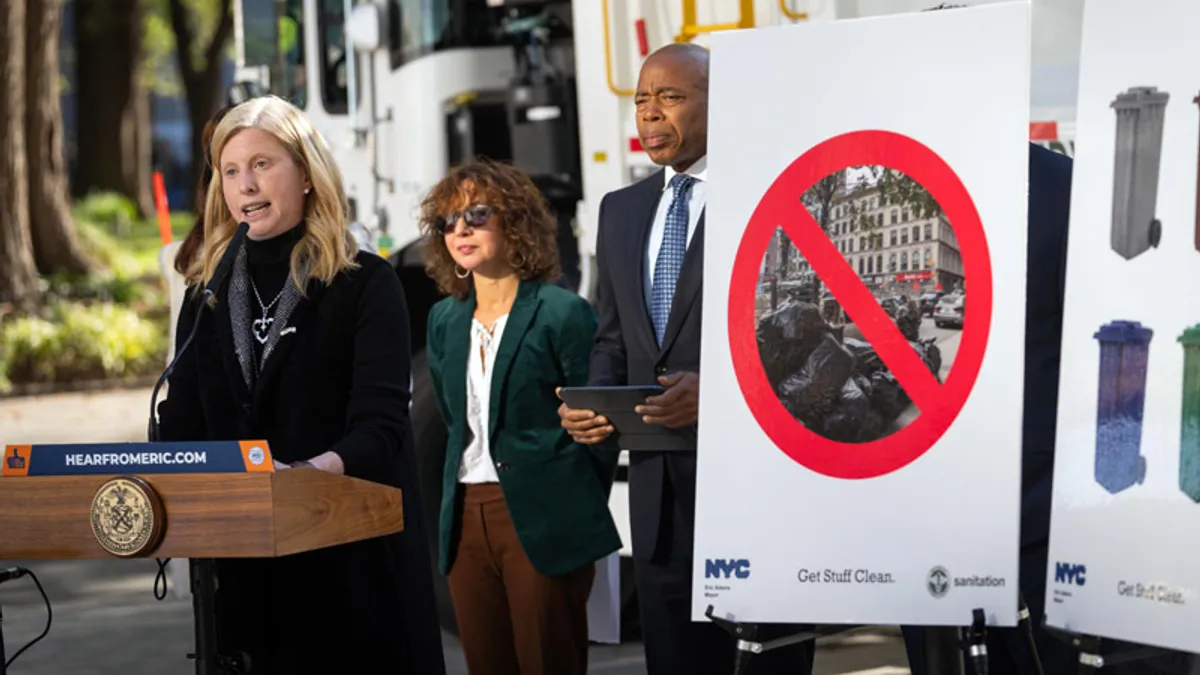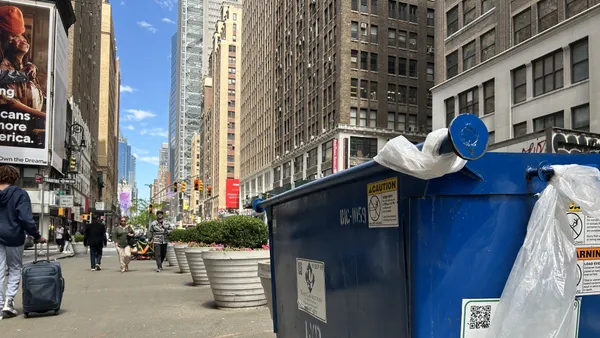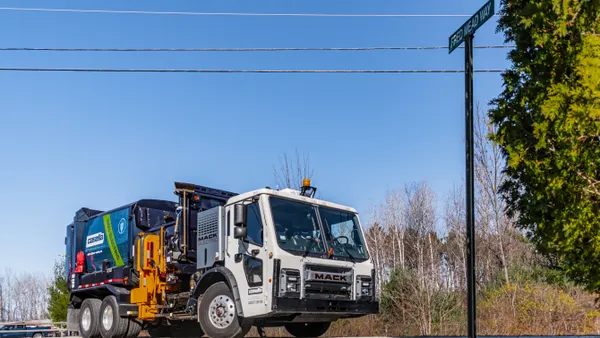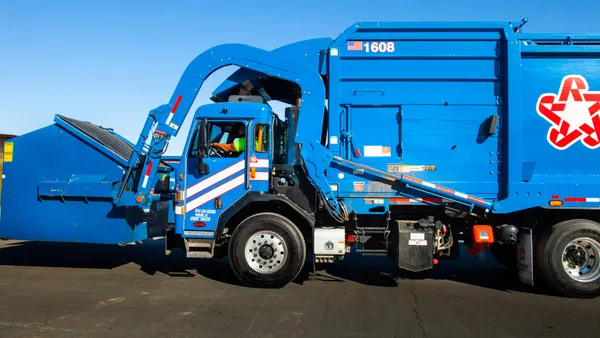Dive Brief:
- New York’s Department of Sanitation announced plans this week to pilot automated side loaders to collect large stationary containers from high-density residential buildings.
- Residential buildings with 31 or more units will be required to use the on-street containers for refuse. Buildings with between 10 and 30 units may choose between these containers or individual carts. Smaller buildings must use carts by the summer of 2026.
- DSNY will pilot the stationary containers throughout all of Manhattan Community Board 9 (West Harlem) in the spring of 2025 before considering further expansion.
Dive Insight:
This latest news is essentially the last piece of the puzzle for New York’s ongoing containerization push: how to handle waste for some of the city’s largest buildings.
Like prior containerization announcements, this was framed as part of Mayor Eric Adams’ agenda to mitigate rodent populations and improve street cleanliness. Adams called it a “transformative moment” after arriving to a Thursday press conference in the prototype vehicle.
DSNY manages an estimated 24 million pounds of waste per day from all residential buildings and has been looking to move away from the use of loose bags or store-bought bins. Last spring, it identified stationary shared containers as the best solution for medium- and high-density buildings on 39% of streets and individual carts at smaller buildings for 50%, with the remainder considered too difficult to containerize due to space. At the time, it said stationary shared containers were the preferred option for larger buildings and estimated implementation would take three to five years.
Since then, DSNY chose to allow individual carts for buildings of up to nine units. At the event, Commissioner Jessica Tisch said the agency did an updated volumetric analysis that helped it land on this new plan which will cover a broader range of streets than originally anticipated and worked quickly with multiple vendors on the prototype.
“We were able to utilize an R&D provision in our current truck contract that let us do something incredible. We took an American truck chassis — the same engine and cab our sanitation workers already use — and a European body with an automated side-loading mechanism and engineered them to work together, which I have to say was no small feat,” she said.
Tisch said the city’s waste collection system had “not seen this kind of infusion of new technology since the invention of the compactor truck in the 1930s.” Automated side loaders are common in many parts of the U.S. for smaller carts, but this type of container is not.
DSNY currently runs an estimated 2,100 rear-load collection vehicles and contracts with Mack Trucks. Mack did not respond to a request for comment. DSNY said Mack built the prototype chassis. Farid engineered and built the body, including the lift arm. Gabrielli and subcontractor Vasso performed the integration.
Robin Levine, an assistant commissioner of public affairs at DSNY, said via email that the event used “samples of a few kinds of European-style of containers.” An official RFP to procure containers will be coming “next month.” The agency said it expects to need 12 new trucks to perform this service throughout Manhattan CB9.
The Adams administration has been very focused on collection changes since taking office in 2022. Local waste experts involved in the 2016 Zero Waste Design Guidelines process hoped it would be a priority after the election.
In October 2022, DSNY announced plans to limit set-out times for waste on the curb. Last year, the agency announced plans to require containerization for all commercial businesses (fully effective in March), piloted larger wheeled containers in West Harlem residential buildings and initiated the plan to require individual carts at smaller buildings. An RFP to manufacture “NYC Bins” for that latter initiative was due Jan. 18 and drew interest from many of the industry’s major vendors.
This week’s announcement also came up with a few notable shifts. While DSNY initially projected the on-street containers might need up to 150,000 parking spots, the New York Times reported this week that the new estimate is 44,000 to 68,000 spots. Tisch estimated the total effects would be 1% of all street parking spots and said DSNY will conduct an environmental impact statement.
Part of this shift is due to two changes in DSNY’s approach that are unique versus international cities. First, it will not require the containerization of recyclables in order to allow more space for stationary refuse containers. At the same time, DSNY does not plan on allowing buildings to share containers. Instead, each location will have its own designated container(s) that will likely be accessed by building staff.
Clare Miflin, founder of the Center for Zero Waste Design, said she was glad to see further containerization progress though disagreed with elements of the approach.
“With a little more thought the system could be designed to do so much more than just hide the trash. If containerization is done right it can reduce waste and improve streetscapes,” she said, reupping a suggestion to consider waste reduction.
DSNY’s latest curbside diversion rate, according to a report this week, stayed static at 17.2% for FY23.
Miflin said large buildings should be able to temporarily set out the larger wheeled bins that many already use to transport waste and others could use if certain compactors were retrofitted. This could save time for building staff and limit the use of public space for stationary containers. Miflin noted that sidewalks have already become more full with individual commercial bins. “Why give buildings all this street space?” she asked.
Tisch said DSNY chose to skip recyclables in part because refuse and organics are more apt to attract rodents. DSNY confirmed that its curbside organics program, set to be fully scaled up this fall, requires the use of lidded containers. “In the future we may authorize a larger stationary on-street container for compostable material,” said Levine.
Tisch also said the new system would be “substantially faster” and “far safer” for workers than manual collection, while noting each truck will still have two people. Teamsters Local 831, which represents DSNY’s collection workers, told Waste Dive last year it didn’t anticipate ever moving to a one-person truck. The union was not available for comment on this latest announcement.


